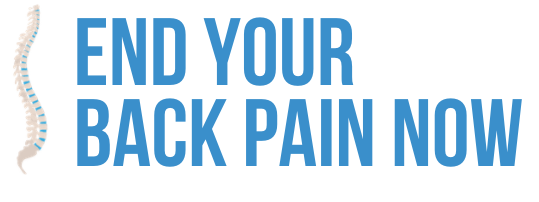Recently, I ran a survey amongst back pain sufferers from my email list, and an interesting question was posed to me. The question was:
“What is the ONE thing that is common in most back pain sufferers – meaning – what can the majority of us do that would make the greatest difference?”
Frankly, the majority of back pain cases have the same thing in common:
MUSCLE IMBALANCES
However…what is CAUSING those muscle imbalances is the real difference. You see, as I address clearly in my DVD set “End Your Back Pain Now!”, over 90% of individuals have an excessive anterior pelvic tilt. The common characteristics include:
Tight-Facilitated Muscles:
Psoas-Iliacus
Quadriceps
Adductors-Medial Hip Rotators
Lumbar extensors
Weak-Inhibited Muscles:
Abdominal wall (rectus abdominus, external obliques, internal obliques, transverse abdominus)
Hamstrings
Glutes
External Hip Rotators such as Piriformis
Now, keep in mind these are general. Some of those muscles are tight, some being weak. Many times not all of them, and some may be tight on one side, with an opposing pattern on the other. Many combinations can exist.
Correction of these imbalances must follow a logical outline. In my DVDs, I discuss how to stretch the tight muscles, and strengthen the weak muscles. This is the most logical place to start. I believe in assuming that the simplest approach will work. 99% of the time, this relieves pain relatively quickly, usually as soon as the back pain sufferer learns to perform the motions correctly. If the pattern keeps coming back, even as the routines are performed, then a deeper root cause should be assumed.
Too many times therapists and doctors assume the most DIFFICULT scenario. Such as some major joint malfunction, subluxation, etc. While these things may be present, addressing them may not actually be the best approach. For example; if a disc bulge is found on an MRI, most doctors assume the pain is coming from the disc, even if the symptoms don’t line up with a disc bulge. The next recommendation is usually a surgical consult.
To me, that jumps just a little to far too soon. There are many non-surgical approaches to disc bulge rehabiliation, such as the methods described by Robin Mckenzie, a well-known physical therapist from New Zealand who has an excellent approach.
This even assumes that the pain is from the disc. I have found many occasions in which a patient comes in and says they have a disc bulge, but when I have them perform movements that would normally make them HURT BAD if they had a disc bulge, interestingly they report no pain.
Don’t know how I got this far from the original intention of the question, but I do that from time to time!
Anyway, the most common issue with back pain sufferers is muscle imbalances. The FIRST step is to address them directly with stretching and strengthening movements, then go from there!
Check out my DVD for an EXACT program on how to do this:
–Sam Visnic
